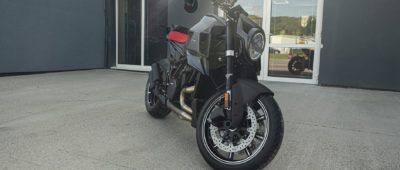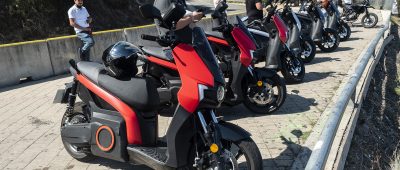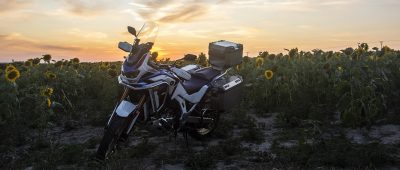Najskôr začneme históriou a geografiou. Viete kde bola zaznamenaná najnižšia teplota na svete? Na polárnej stanici Vostok v Antarktíde s hodnotou -89,2 stupňa Celzia. Ale tam sa autom po súši nedá dostať. Tak britský tím zvolil ako cieľ cesty sibírsku stanicu pri dedine Ojmjakon, kde namerali -67,7 stupňa Celzia.
Vlastne je to najchladnejšie miesto severnej pologule. S podporou Land Roveru sa v ústrety zimy vybrali zástupcovia Royal Geographical Society a Institute of British Geographers. Traja členovia pozostávajúci z dobrodruha, ktorý má už niečo za sebou, filmára a vedca skúmajúceho studené počasie. Trojica vyrazila z Británie do Škandinávie, nad Polárny kruh, odtiaľ na NordKapp na vrchu Európy a cez Transsibírsku diaľnicu do Ojmjakonu v Rusku.
Počas cesty sa cestovatelia dostali do teplôt až mínus 58 stupňov Celzia. No a Defender zládal. Mal off-roadové sprevodovanie a samostatné kúrenie, plne nezávislé na behu motora. Defender tam ovšem nezostane, rovnaká posádka pôjde naspäť a prejde 10 000 míľ (16 000 kilometrov) späť do Británie cez Kazachstan a juh Škandinávie. Pre kompletnosť prikladáme tlačovú správu v Angličtine pod fotogalériou.
Land Rover And The Royal Geographical Society (with IBG) 2013 Bursary Winning Expedition Team Reach Pole Of Cold
– Land Rover and The Royal Geographical Society (with Institute of British Geographers) 2013 Bursary Winners reach the Pole of Cold in Siberia in their Land Rover Defender
– Land Rover Defender with heat system modifications copes with temperatures as low as -58 degrees centigrade and completes the first 20,000 kilometres
– Educational resources produced from the expedition will be available online for schools by the Royal Geographical Society (with IBG)
– Team highlights include joining the Skolt Sami of Finnmark for their annual reindeer roundup and watching the aurora while listening to a Sami Shaman
Whitley, UK, 22nd January 2014 – The Land Rover and The Royal Geographical Society (with IBG) supported ‚Pole of Cold‘ expedition team have today reached their goal – Oymyakon, Russia -aka the ‚Pole of Cold.‘
The team have travelled more than 20,000km, through countries including Denmark and Norway, to reach their destination. They have been as far north as the top of Norway and Finland, hundreds of kilometres above the Arctic Circle, and along the Trans-Siberian Highway. So far temperatures have been as low as -58 degrees C.
The Oymyakon region earned its title as the ‚Pole of Cold‘ when -67.7 degrees C was recorded in February 1933. The district reaches such low temperatures, despite being relatively far South, because its continental geography limits the warming effects from the oceans. High pressure weather systems can also keep the sky clear of clouds, letting heat radiate out.
The team – led by experienced British adventurer Felicity Aston – were recipients of the sixth annual Land Rover Bursary. They include Manu Palomeque, a photographer and film-maker, and Gisli Jonsson, a highly experienced cold-weather engineer, mechanic and winter driving advisor.
The team’s modified Land Rover Defender has transported them across the many challenging terrains of the trip, including joining a snowplough convoy through a storm to reach NordKapp, at the top of Europe, and driving along official ice roads on the frozen Lena River. Enhancements to the vehicle include uprated suspension, underbody and driveline protection, auxiliary heaters for the engine and occupants, a long range fuel tank and extra equipment and luggage storage.
Educational resources for schools have been produced by the Royal Geographical Society (with IBG) and will be available online to bring new geographical ideas from the field to the classroom. The expedition can be used to inspire and support learning of the new Key Stage 3 National Curriculum, which covers both Russia and Cold Environments.
The expedition set out to explore the social, cultural and physical implications of living in the most extreme climates during winter, and so far the team have met a diverse range of communities and individuals. They have joined the Skolt Sami of Finnmark for their annual reindeer roundup, watched the aurora while listening to a Sami Shaman, walked across a frozen Siberian river in moonlight, celebrated Christmas Day three times and have sung along with Tuvan throat singers on New Years Day at the ‚Centre of Asia.‘
Felicity Aston, expedition leader, says of the culture they have experienced, „In these extremes of cold it is the details of daily life that are fascinating – it often seems that everything is backwards – ice-cream is sold on tables in the open, while fruit and vegetables are warmed in blankets, ice-roads on frozen rivers are preferred to roads, prams have sledge runners rather than wheels, cars are left running outside shops and in petrol stations so that the engines don’t freeze and cities look like they are on fire as buildings and vehicles steam.“.
The Defender has also become a star of the expedition in its own right. As Felicity explains, „The Defender has not just been a mode of transport during the Expedition, it has been our security and our talisman! Thanks to a minor modification, the Defender can be heated even when the engine is off, which means it has been a refuge for us when the temperatures outside have been really punishing.“
„The Defender has also attracted a lot of attention as we have passed through cities, towns and villages which has led to lots of interactions and encounters that wouldn’t have happened otherwise – being red helps to get us noticed! Right the way across Siberia we’ve been getting hoots and thumbs-up, waves and smiles. Pedestrians in the street come up to pat the bonnet in approval and we’ve come to recognise the phrase ‚Machina Harosho‘ (Good Car). Getting such appreciation makes driving a lot of fun.“
The team will now set out to cover the 15,000km back to the UK. Their return route will take them through Altai in southern Siberia, into Kazakhstan and then back through southern Scandinavia, eventually returning to Harwich and London. Once back in the UK the team plan to run an exhibition of their findings across the UK, as well as publishing their findings and photography from the trip.
Says Felicity: „We are only here thanks to the time, energy and enthusiasm of many people and we are really grateful for that. Along the way we have seen the gradual change of the people, culture and landscape around us – and of course the climate. We really have chased winter all the way to the Pole of Cold and it has been an incredible, unforgettable and enlightening experience.“














